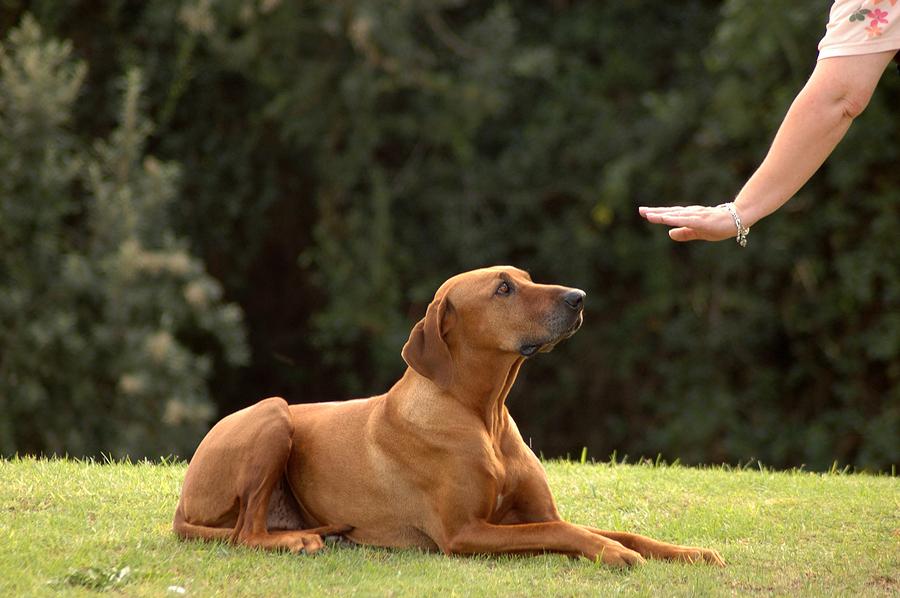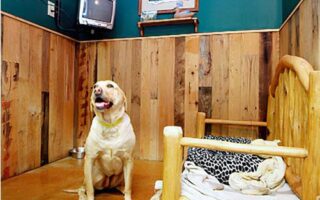Title: Paws and Porcelain: The Art of Toilet Training Your Dog
Imagine waking up on a crisp morning, stepping into your bathroom, and finding your furry companion patiently perched beside the toilet, ready to do their business. While it may sound like a whimsical fantasy, toilet training your dog is an achievable goal for many pet owners. As unconventional as it may seem, this practice not only alleviates the hassle of traditional potty breaks but also fosters a unique bond between you and your four-legged friend. In this article, we will explore the methods, tips, and benefits of teaching your dog to embrace the toilet, transforming what was once a simple chore into a delightful routine that enhances your living space. Whether you’re a seasoned dog owner or a curious newcomer to the world of pet training, prepare to embark on an adventure that promises to redefine the way you and your pup approach bathroom habits.
Table of Contents
- Understanding Your Dogs Instincts for Toilet Training
- Step-by-Step Guide to Introducing the Toilet Concept
- Creating a Consistent Routine for Successful Toilet Habits
- Troubleshooting Common Challenges in Dog Toilet Training
- Q&A
- In Summary
Understanding Your Dogs Instincts for Toilet Training
Toilet training your dog involves tapping into their instinctual behaviors and natural cues. Dogs are inherently clean animals, often preferring to keep their sleeping area separate from their toilet area. Understanding this instinct can be a significant advantage during the training process. Observe your dog’s natural tendencies, such as sniffing around or circling before they eliminate; these are clear indicators that they need to relieve themselves. Recognizing these signs allows for timely intervention, reinforcing the idea that there is a specific place for their bathroom needs.
Creating a structured routine can further enhance your dog’s understanding of where and when to go. Consistency is key, so consider implementing a fixed schedule with regular feeding times and walks. This not only helps set their biological clock but also strengthens the connection between specific cues (like going outside) and relieving themselves. Utilizing positive reinforcement, such as treats and praise, when they use the designated toilet area will empower them to associate good behavior with rewards. Keep your training space clean and eliminate any lingering odors to discourage them from reverting to previous habits. Below is a simple overview of steps to consider:
| Step | Description |
| 1. Observe | Watch for signs that your dog needs to go. |
| 2. Schedule | Establish a regular routine for feeding and toilet breaks. |
| 3. Reward | Use treats and praise to reinforce positive behavior. |
| 4. Clean | Keep the training area clean to prevent accidents. |
Step-by-Step Guide to Introducing the Toilet Concept
Introducing your dog to the toilet may seem like a daunting task, but with a methodical approach, it can become a seamless part of your pet’s routine. Begin by familiarizing your dog with the toilet area. Encouraging them to explore the space will create a positive association. Utilize treats and verbal praises during this introduction. Establish command words such as “toilet” or “go” to signal your dog when it’s time to use the bathroom. Consistency here is key; repeat these commands each time you lead them to the toilet.
Once your dog is comfortable in the bathroom environment, gradually transition them to using the toilet. Use a training pad positioned near the toilet to help bridge this new behavior. Reward your dog with treats when they approach or use the pad. Moving the pad closer to the toilet over several days will encourage your dog to now see the toilet itself as the next step. For this transition, consider the following tips:
- Patience is Crucial: Don’t rush the process; each dog learns at their own pace.
- Stay Consistent: Use the same commands and routines daily to reinforce behavior.
- Positive Reinforcement: Always reward your dog for their progress, no matter how small.
| Tip | Action |
|---|---|
| Familiarize | Allow your dog to explore the toilet area. |
| Establish Commands | Use consistent verbal cues like “toilet”. |
| Use Training Pads | Help them transition by moving pads closer to the toilet. |
Creating a Consistent Routine for Successful Toilet Habits
Establishing a reliable schedule is essential for encouraging your dog to adopt successful toilet habits. Dogs thrive on routine, and by offering consistent times for bathroom breaks, you help them understand when and where it’s appropriate to relieve themselves. Consider the following tips to create an effective routine:
- Morning Rituals: Take your dog out first thing in the morning before breakfast to set a positive tone for the day.
- Frequent Breaks: Schedule bathroom breaks every few hours, especially after meals or playtime, to reinforce the routine.
- Bedtime Routine: Ensure a late evening walk or bathroom break to prevent accidents overnight.
It’s also advantageous to develop a designated toilet area that your dog associates with bathroom time. This area should be easily accessible and consistently maintained. Here’s a simple table that outlines key elements to reinforce your dog’s toilet training process:
| Element | Description |
|---|---|
| Location | Choose a quiet, familiar area for consistent bathroom breaks. |
| Consistency | Take your dog to the same spot each time to promote recognition. |
| Positive Reinforcement | Reward your dog immediately after they toilet in the correct area. |
Troubleshooting Common Challenges in Dog Toilet Training
Training your dog to use the toilet can sometimes lead to unforeseen obstacles. One common issue is the dog’s reluctance to approach the toilet area. This can stem from various factors, such as previous negative experiences or simple unfamiliarity. To overcome this, consider the following tips:
- Familiarization: Allow your dog to explore the toilet space without pressure.
- Positive Reinforcement: Use treats and praise when your dog shows interest in the area.
- Routine Establishment: Keep a consistent schedule to help your dog associate certain times with toilet training.
Another prevalent challenge is accidents occurring despite training efforts. This can be frustrating and may lead to discouragement. Addressing this requires patience and consistency. Here are some strategies to help reduce mishaps:
- Frequent Breaks: Take your dog out regularly, especially after meals or naps.
- Monitoring Behavior: Watch for signs that your dog needs to go, such as circling or whining.
- Clean Thoroughly: Eliminate any lingering odors from accidents to prevent repeat occurrences.
Q&A
Q&A: Training Your Dog to Use the Toilet
Q: Can dogs really be trained to use the toilet?
A: Yes! While it may sound unconventional, many dog owners have successfully trained their pets to use the toilet. This process involves patience, consistency, and positive reinforcement.
Q: What is the first step in this training process?
A: The first step is to get your dog comfortable with the idea of using the toilet. Start by observing their natural bathroom habits and gradually introduce them to the toilet area, rewarding them for showing interest.
Q: How can I encourage my dog to use the toilet instead of going outside?
A: You’ll want to create a routine. Begin by encouraging your dog to use a designated spot (like a pee pad) near the toilet. Gradually move the pad closer to the toilet until they begin associating that space with bathroom activities.
Q: Are there specific commands I should use during this training?
A: Yes, using consistent commands can help. Phrases such as “go potty” or “on the toilet” can signal to your dog what you expect. Pair the command with praise when your dog responds correctly to reinforce the behavior.
Q: How long does it usually take for a dog to learn this new skill?
A: The time frame varies based on the individual dog. Some may take a few weeks, while others could take several months. Consistency and patience are key to success!
Q: What if my dog seems afraid of the toilet?
A: If your dog appears fearful, take a step back. Use positive reinforcement to desensitize them to the toilet’s presence. Allow them to explore it at their own pace, rewarding them for calm behavior around the toilet.
Q: Should I consider using a special dog toilet seat?
A: A specially designed dog toilet seat can indeed help with training. These seats are designed for dogs and can make the transition smoother by providing a comfortable and familiar place for them.
Q: What common mistakes should I avoid during this training?
A: One common mistake is pushing your dog too quickly to use the toilet without enough groundwork. Avoid using negative reinforcement or punishment, as this can create anxiety and hinder the training process.
Q: Can all dog breeds be toilet trained?
A: While most dogs can be trained to some extent, breeds with shorter legs or those less inclined to jump may find it more challenging. Consider your dog’s capabilities and tailor the training method accordingly.
Q: Is toilet training a suitable option for every dog owner?
A: Toilet training can be a great option for some pet owners, but it depends on your lifestyle, your dog’s personality, and your willingness to invest time and effort in the training process. Evaluate what’s best for you and your furry companion.
Q: do you have any tips for success?
A: Absolutely! Be patient, stay consistent, and celebrate small victories. Keep the training sessions short and fun, and always reward your dog for their efforts. With dedication, your dog can become a toilet-using pro!
In Summary
training your dog to use the toilet is a fascinating journey that marries patience with ingenuity. While it may seem daunting at first, the rewards—both for you and your furry friend—can be immense. By embracing this unconventional approach, you not only enhance your dog’s independence but also contribute to a cleaner, more harmonious living environment. Remember, every dog is unique, and the path to success may vary. Celebrate the small victories along the way, and don’t hesitate to seek support if needed. With time, persistence, and a touch of creativity, you’ll find that transforming your pup into a toilet-trained companion is not just a possibility but a delightful reality waiting to unfold. So, roll up your sleeves and embark on this unique adventure—your future, toilet-trained dog awaits!


